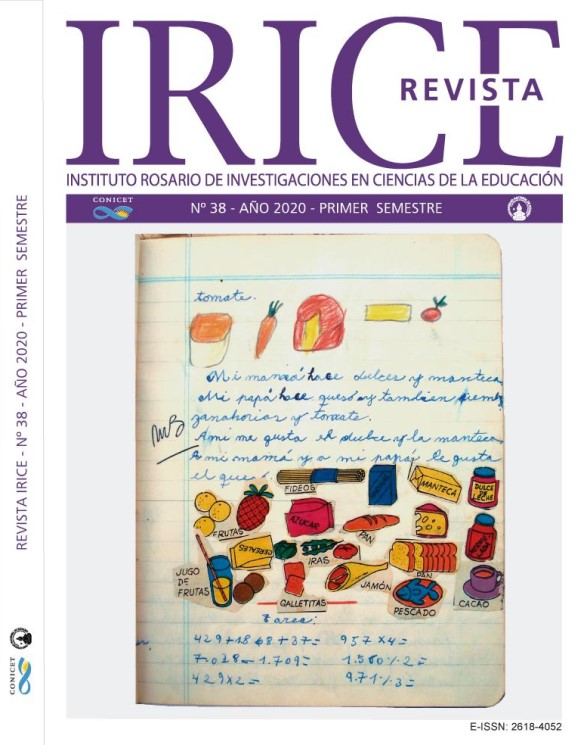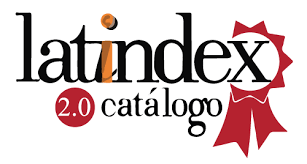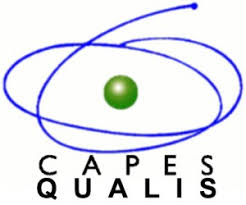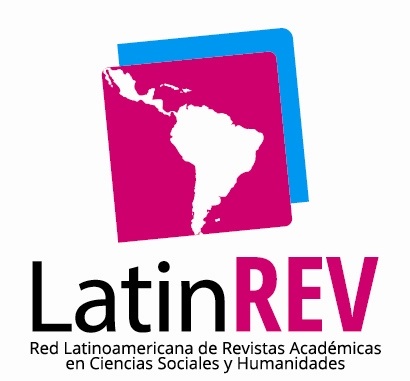Recognition of noun phrases formed by indefinite articles in Spanish corpus as a second language with the NooJ system
DOI:
https://doi.org/10.35305/revistairice.vi38.1310Keywords:
noun phrases, indefinite articles, spanish corpus, NooJ systemAbstract
The goal of this work, which is part of a research project on the teaching of Spanish through computer tools, is to show how the automatic recognition of noun phrases formed by indefinite articles, which are found in corpus of texts written by students of Spanish as a second language, can be carried out. It should be noted that the sample is divided into two groups of texts according to the level of knowledge of the language of the participating subjects. For this purpose, the NooJ system, not only will be used to recognize the constructions that coincide with the target language, but also those that deviate from it, distinguishing them by means of a label. The work methodology will consist of a linguistic description of the noun phrases in Spanish and then propose a classification for the indefinite ones that will permit to use the resource of the software in respect of generating "productive syntactic grammars" that allow to detect the idiosyncratic structures present in the corpus.The results obtained from the analysis of the data may contribute to the studies within the perspective of the interlanguage hypothesis, demonstrating that certain constructions are common to the productions of students who receive the same level of instruction, but these may decrease in quantity and even disappear as soon as the students make progress in the process of acquiring a second language, due to the transitory character of the mentioned linguistic system.
Downloads
References
Alba Quiñones, V. de. (2009). El análisis de errores en el campo del español como lengua extranjera. Revista Nebrija de Lingüística Aplicada a la Enseñanza de Lenguas, 3(5), 1-16. https://doi.org/10.26378/rnlael35103
Alcina Claudet, A. (1999). Las expresiones referenciales. Estudio semántico del sintagma nominal (Tesis doctoral). Universidad de Valencia, Valencia.
Alexopolou, A. (2010). La función de la interlengua en el aprendizaje de lenguas extranjeras. Revista Nebrija De Lingüística Aplicada a La Enseñanza De Lenguas, 5(9), 86-101. Recuperado de https://revistas.nebrija.com/revista-linguistica/article/view/157
Fernández, S. (1997). Interlengua y análisis de errores en el aprendizaje de español como lengua extranjera. Madrid: Edelsa.
Ferreira, A. , Elejalde, J., & Vine, A. (2014). Análisis de Errores Asistido por Computador basado en un Corpus de Aprendientes de Español como Lengua Extranjera. Revista signos, 47(86), 385-411. https://dx.doi.org/10.4067/S0718-09342014000300003
Jiménez Juliá, T. (2007). Aspectos gramaticales de la frase nominal en español. Santiago de Compostela: Universidade de Santiago de Compostela.
Lavid, J. (2005). Lenguaje y nuevas tecnologías. Nuevas perspectivas, métodos y herramientas para el lingüista del siglo XXI. Madrid: Cátedra.
Leonetti, M. (1999). Los determinantes. Madrid: Arco/Libros.
Liceras, J. (Ed.). (1992). La adquisición de las lenguas extranjeras. Hacia un modelo de análisis de la interlengua. Madrid: Visor.
Liceras, J. (2009). La interlengua del español en el siglo XXI. Revista Nebrija de Lingüística Aplicada, 3(5), 36-49. https://doi.org/10.26378/rnlael35107
Consejo de Europa (2002). Marco Común de Referencia Europeo (MCRE). Madrid: Instituto Cervantes. Recuperado de http://cvc.cervantes.es/ensenanza/biblioteca_ele/marco/cvc_mer.pdf
Nemser, W. (1971). Approximative Systems of Foreign Language Learners. En J. C. Richards (Ed.), Error Analysis (pp.55-63). Londres: Longman.
Parodi, G. (2004). Textos de especialidad y comunidades discursivas técnico-profesionales: una aproximación basada en corpus computarizado. Revista Estudios filológicos, 39, 7-36. Recuperado de http://revistas.uach.cl/html/efilolo/n39/body/art01.html
Quiroz Herrera, G. (2005). Los sintagmas nominales extensos especializados en inglés y en español: descripción y clasificación en un corpus de genoma. Recuperado de https://repositori.upf.edu/bitstream/handle/10230/1310/05mon010.pdf?sequence=1&isAllowed=y
RAE (2010). Nueva gramática de la lengua española. Buenos Aires: ESPASA.
Rigamonti, D. (2006). Problemas de lingüística de la adquisición y enseñanza del E/ELE a italófonos. Recuperado de https://www.ledonline.it/ledonline/rigamonti/Rigamontiproblemas.pdf
Selinker, L. (1972). Interlanguage. IRAL, 3, 209-231.
Silberztein, M. (2003). NooJ Manual. Recuperado de www.nooj4nlp.net
Tordera Yllescas, J. (2011). Puentes entre la lingüística computacional y la Psicolingüística. Revista de Lingüística y Lenguas Aplicadas, 6, 341-352. https://doi.org/10.4995/rlyla.2011.914
Torijano Pérez, J. A. (2008). El estudio de los determinantes en aprendices lusohablantes de español, DICENDA. Cuadernos de Filología Hispánica, 26, 235-257.
Tramallino, C. (2013). Análisis morfológico con herramientas informáticas. Reconocimiento de nombres en textos de español con el sistema Nooj. Revista Lingüística y Literatura, 64, 33-48. Recuperado de http://aprendeenlinea.udea.edu.co/revistas/index.php/lyl
Tramallino,C., & Arnal, R. (2019). Reconocimiento automático de sintagmas nominales en producciones escritas de aprendientes brasileños de español. e-universitas, 22, 1-9. Recuperado de http://www.e-universitas.edu.ar/index.php/journal/article/view/188/11-2-87
Valenzuela, P., & Toledo, G. (2019). Uso y adquisición de artículos en español como segunda lengua. Logos (La Serena), 29(2), 268-285. https://dx.doi.org/10.15443/rl2922
Downloads
Published
How to Cite
Issue
Section
License
Copyright (c) 2020 Carolina Tramallino, Romina Paola Arnal

This work is licensed under a Creative Commons Attribution-NonCommercial-ShareAlike 4.0 International License.
Aquellos autores/as que tengan publicaciones con esta revista, aceptan los términos siguientes:
- Los autores/as conservarán sus derechos de autor y garantizarán a la revista el derecho de primera publicación de su obra, el cuál estará simultáneamente sujeto a la Licencia Creative Commons Reconocimiento-NoComercial-CompartirIgual 4.0.
- Los autores/as podrán adoptar otros acuerdos de licencia no exclusiva de distribución de la versión de la obra publicada (p. ej.: depositarla en un archivo telemático institucional o publicarla en un volumen monográfico) siempre que se indique la publicación inicial en esta revista.
- Se permite y recomienda a los autores/as difundir su obra a través de Internet (p. ej.: en archivos telemáticos institucionales o en su página web) antes y durante el proceso de envío, lo cual puede producir intercambios interesantes y aumentar las citas de la obra publicada. (Véase El efecto del acceso abierto).




















